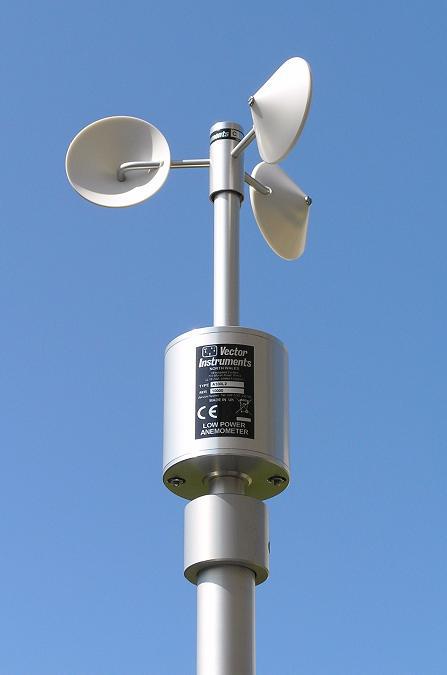Professional Tips for Calibrating Your Anemometer for Optimum Performance
Professional Tips for Calibrating Your Anemometer for Optimum Performance
Blog Article
Anemometers Unveiled: Understanding Their Significance in Environmental Tracking and Precaution
The role of anemometers in environmental surveillance and safety actions is commonly undervalued, yet their significance is obvious. From meteorology to aviation safety and security, anemometers play a vital role in supplying precise information that educates decision-making processes and enhances overall security.
History of Anemometers
The development of anemometers can be mapped back to the old worlds where primary wind measuring gadgets were initial used. One of the earliest well-known anemometers was the hemispherical mug anemometer developed by Leon Battista Alberti in the 15th century.
In the 18th century, the renowned scientist John Thomas Romney Robinson presented the Robinson anemometer, which featured four hemispherical mugs installed on straight arms that extended from a central axis. This layout became a criterion in atmospheric measurements because of its precision and dependability. Throughout the years, innovations in technology led to the growth of more contemporary anemometers, consisting of ultrasonic anemometers and laser Doppler anemometers, offering raised accuracy and performance in measuring wind speed and instructions. The background of anemometers showcases an impressive trip of technology and development in the area of weather forecasting.
Types of Anemometers
Throughout the area of weather forecasting, different types of anemometers have actually been established to properly measure wind rate and direction. Sonic anemometers make use of ultrasonic signals to measure wind rate and instructions accurately. Hot-wire anemometers run based on the concept that the cooling result of wind on a warmed cord is symmetrical to the wind speed.
Applications in Weather Forecasting
Having actually talked about the various kinds of anemometers made use of in meteorology for measuring wind rate and direction, it is necessary to discover their practical applications in the field. Anemometers play a crucial role in weather forecasting by supplying real-time and precise information on wind conditions (anemometer). Meteorologists make use of anemometers to keep track of wind speed and instructions to anticipate climate patterns, issue warnings for extreme weather condition events like tornados, hurricanes, and tornadoes, and evaluate weather for aeronautics security
In meteorology, anemometers help in comprehending local and regional wind patterns, which are vital for predicting climate modifications and identifying climatic trends. These tools are also used in study to study microclimates, metropolitan warmth islands, and air contamination diffusion. Additionally, anemometers are utilized in farming to optimize crop monitoring techniques, such as irrigation and pesticide application, based on wind conditions.
Relevance in Aviation Safety
An important facet of guaranteeing aviation safety and security lies in the precise monitoring of wind conditions making use of anemometers. Anemometers play a crucial function in air travel by supplying real-time data on wind rate and direction, aiding pilots in making notified choices throughout liftoff, landing, and flight. Solid and unpredictable winds can significantly affect aircraft procedures, making it essential for aeronautics authorities to rely upon accurate wind dimensions to make sure the security of guests and staff.

In the dynamic atmosphere of air travel, where even small adjustments in wind rate and instructions can have profound results, anemometers stand as important devices for promoting risk-free and protected air travel.
Duty in Environmental Research Study
Anemometers play a critical duty in environmental research study by supplying vital information on wind speed and instructions. By accurately measuring wind qualities, anemometers assist researchers examine the movement of contaminants in the air, examine the impact of commercial exhausts, and anticipate the spread of pollutants in the environment.


Final Thought
In conclusion, anemometers have actually played a crucial view website duty in ecological monitoring and security measures. Comprehending the relevance of anemometers is essential for accurately determining wind speed and instructions, which is vital for forecasting climate patterns, making sure risk-free air travel procedures, and performing ecological research studies.
One of the earliest well-known anemometers was the hemispherical mug anemometer invented by Leon Battista Alberti in the 15th century. Over the years, advancements in modern technology led to the growth of even more contemporary anemometers, consisting of ultrasonic anemometers and laser Doppler anemometers, offering boosted accuracy and efficiency in gauging wind speed and instructions. Hot-wire anemometers run based on the concept that the cooling result of wind on a warmed wire is symmetrical to click this link the wind speed. Meteorologists use anemometers to monitor wind speed and instructions to forecast weather patterns, problem cautions for extreme climate events like tornadoes, tornados, and typhoons, and examine climatic problems for air travel security.
Understanding the significance of anemometers is necessary for accurately measuring wind speed and instructions, which is vital for predicting weather condition patterns, making sure safe aeronautics operations, and carrying out ecological research studies. (anemometer)
Report this page